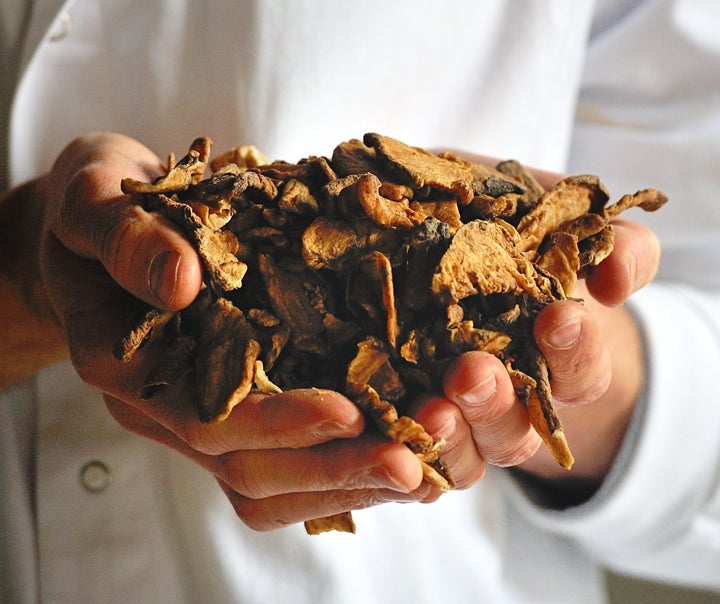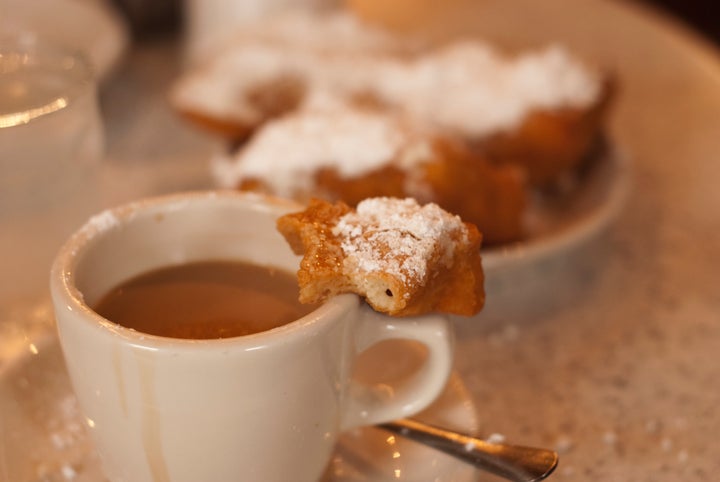If you've ever had the experience of drinking chicory coffee (and chances are, you were in New Orleans when you drank it), you might've had to wonder just exactly what chicory even is. For the record, chicory is this pretty flowering plant.

But underneath the plant is its root, and that's the stuff that we're going to talk about today. The root is what gets roasted and ground to be brewed with coffee in some parts of the world. This is what that root looks like:

But how and why does this stuff end up in our coffee? It's all rooted (pun not intended) in world history, a little bit of tradition and a whole lot of politics and economic hardships. For most of our coffee-drinking past, the addictive caffeinated beverage has been expensive. There weren't always Starbucks and Dunkin' Donuts competing on every street corner. Sometimes coffee was scarce -- especially if a major port was blocked for political reasons.
No one is sure exactly when people began mixing chicory with coffee, but according to Antony Wild (author of 'Coffee: A Dark History'), the use of chicory became popular in France during Napoleon's 'Continental Blockade' Of 1808, which resulted in a major coffee shortage. Chicory is native to France, where it has long been loved for culinary reasons so it's only natural that's where the story began.

During the blockade, the French mixed chicory with limited supplies of coffee to make their coffee stretch -- and even used it in place of coffee altogether. While chicory does't have any caffeine, it does share a similar flavor to coffee, which makes it a decent substitute in times of need.
When the blockade lifted and economic prosperity returned to France, the use of chicory in coffee subsided. But it did not disappear. Actually, the practice made its way over to the French colonies, like Louisiana. In 1860 alone, France exported 16 million pounds of chicory, and as a result, it's now grown in other parts of the world, namely North America and Australia. But it wasn't until the Civil War when Union naval blockades cut off the port of New Orleans, one of the largest coffee imports at the time, that coffee chicory became a big thing stateside.
Staying true to their roots, New Orleans locals turned to chicory to make their limited coffee supply stretch. The practice stuck, even when coffee became readily available again, because according to locals it's all about tradition. The world famous Cafe Du Monde still makes its cafe au lait with chicory, and it's especially good with a side of hot beignets.

Related on HuffPost: